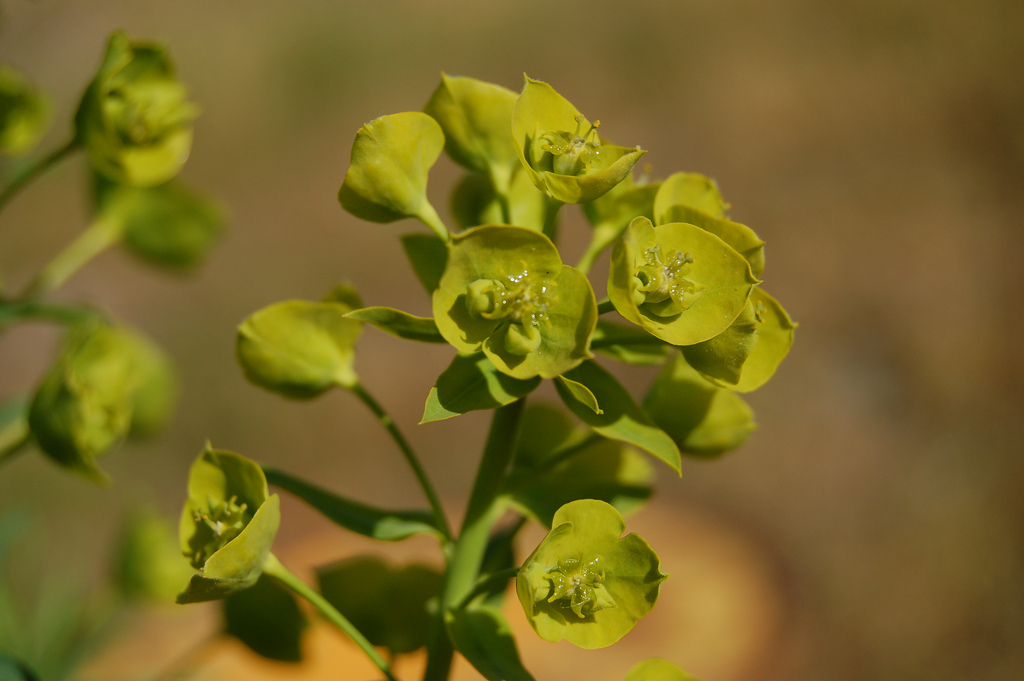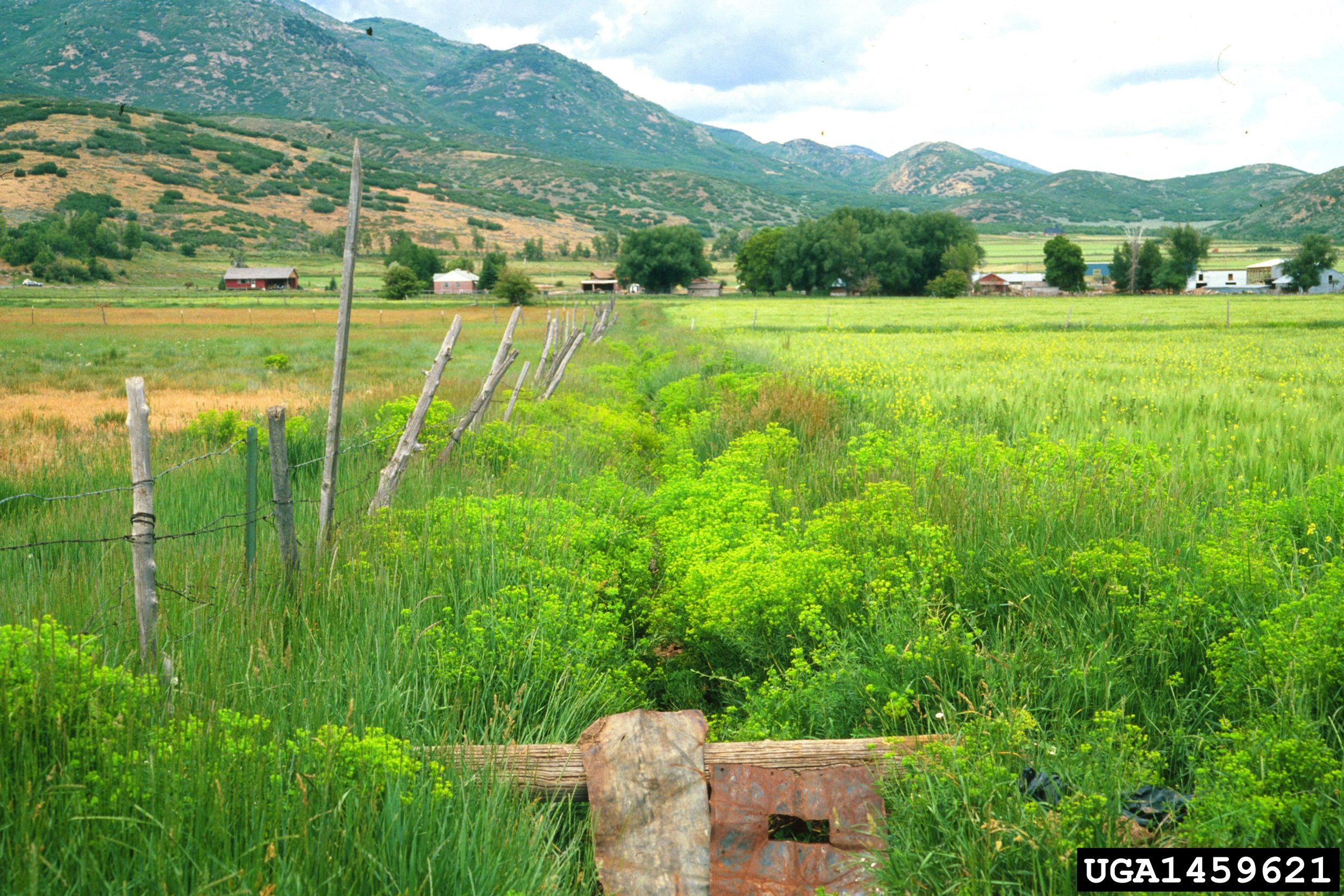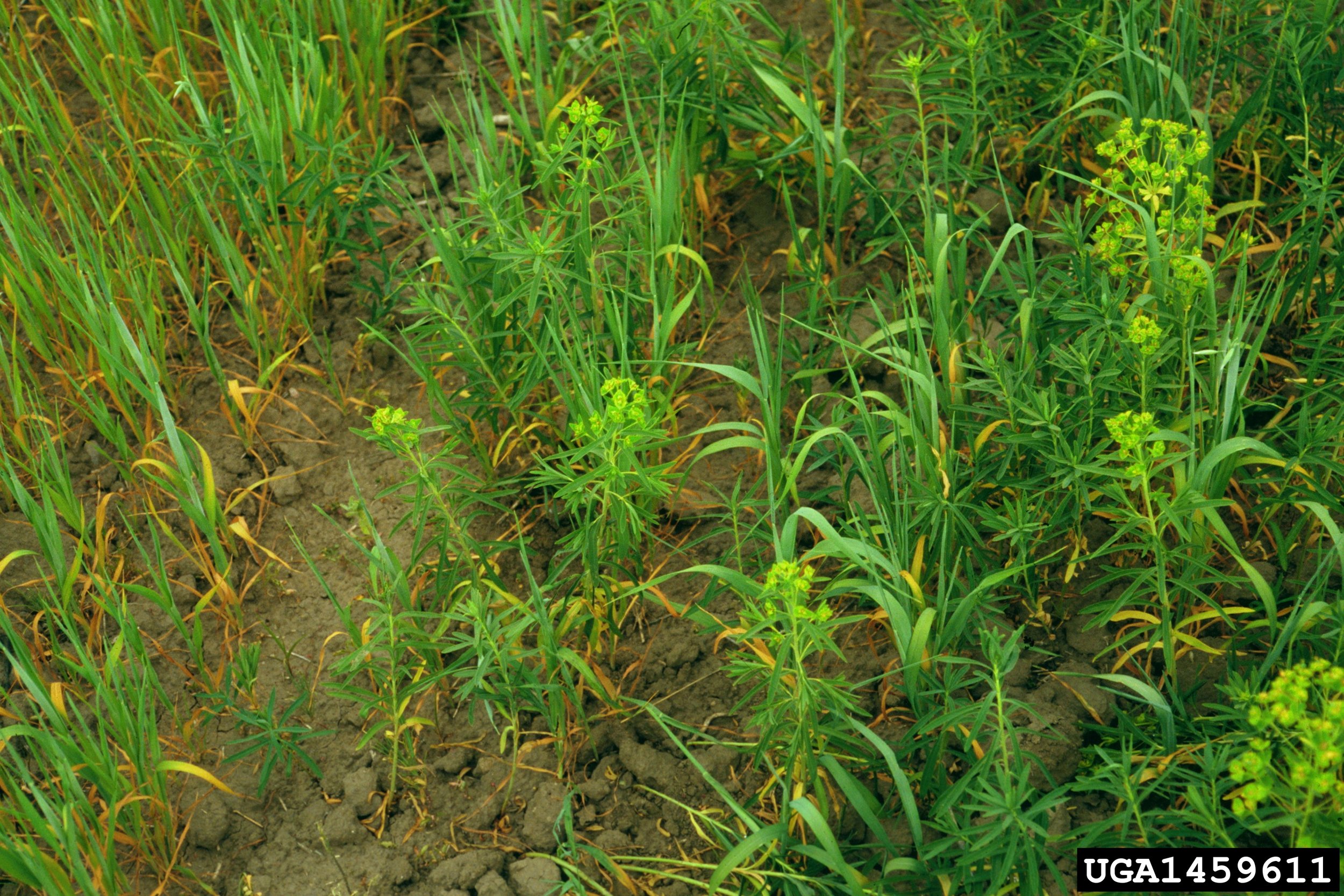A NORTHERN ARIZONA HOMEOWNER'S GUIDE TO IDENTIFYING AND MANAGING invasive plants
LEAFY SPURGE
Common name(s): Leafy spurge
Scientific name: Euphorbia esula
Family: Spurge family (Euphorbiaceae)
Reasons for concern: One of the most tenacious plants in the U.S. Its extensive root system contains large nutrient reserves and can tolerate long periods of drought. It often produces dense colonies, shading and using much of the available water to outcompete native plants important to wildlife and pollinators. It releases allelopathic toxins into the soil preventing other plants from growing in the area. Sap can be toxic to humans and livestock in some situations.
Classification: Non-native. “Class A Noxious Weed on the Arizona Noxious Weed List, meaning that it is a “high priority for quarantine, control, or mitigation.”
Botanical description: Erect, branching plant, which forms dense colonies.
Leaves: Narrow leaves to up to 4 inches long. Alternate on stem. Ooze milky sap when broken. Seedlings appear reddish. Plants turn reddish or golden yellow in the fall before dropping leaves with onset of cool weather.
Stem(s): Woody at base, branching, erect from 2 to 3 ½ feet tall. Broken stems ooze white milky sap.
Flowers: Appear at tips of midsummer stems as clusters of showy, yellowish-green, heart-shaped bracts (or modified leaves) enclosing a small flower. Blooms June through September. Seedlings do not flower the first season.
Seeds: Mature about 30 days after flowers appear, and can germinate soon thereafter, any time during the growing season. Most germinate the following spring. Capsules explode when dry, sending seeds up to 25 feet away from plant. Remain viable up to 8 years.
Roots: Aggressive, vigorously creeping root system that is deep-rooted, sometimes as deep as 20 feet. Rhizomatous. New shoots are sent up from pink buds on crown or roots, forming a large colony. Roots survive cold winters and continual grazing or mowing.
Native to: Southwestern Europe
Where it grows: Wide range of habitat 4,000 to 9,000 feet in elevation. Disturbed areas, roadsides, prairies, wastelands and rangelands. Adapted to dry areas. Leafy spurge habit.
Life cycle: Perennial
Reproduction: By seed and by aggressive, spreading roots Look-alike native plants: There are several native spurge species (Euphorbia spp.) that can superficially look like leafy spurge. Leafy spurge can be distinguished by long, narrow, hairless, alternate stem leaves.
Weedy characteristics: Leafy spurge is a very aggressively spreading plant and it forms dense colonies or monocultures. Its seeds are explosively thrown far away from plant when mature, and spreading roots readily produce new shoots from vegetative buds. It is best eliminated within 1 or 2 years of infestation.
Control strategies: On small populations, remove as much of the root system and plant as possible, put in garbage bags, and seal. Wear gloves. Frequently monitor previous infestations for new growth. Avoid spreading seeds and plant parts by cleaning all tools, shoes, pets, etc. Avoid transporting soil and gravel from infected sites to non-infected sites. Hand pulling and mowing are usually ineffective on an established stand, though mowing can reduce the number of seeds produced. Eradication of an established population will probably require the services of a professional. Herbicides may be necessary. Contact your local county extension office for more information on chemical control.
Images: Click on an image to enlarge and see the image citation.
Additional references:
Leafy spurge Noxious Weed Control Board, Washington State
Leafy spurge USDA NRCS Plant Guide
Leafy spurge Plant Conservation Alliance’s Alien Plant Working Group







